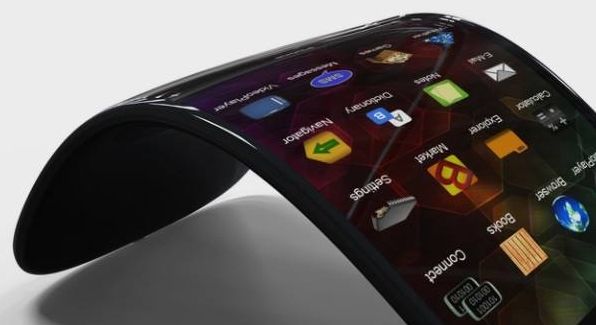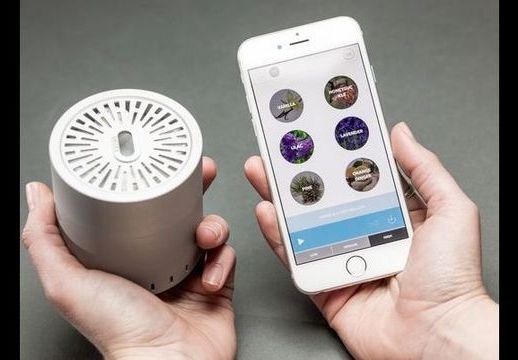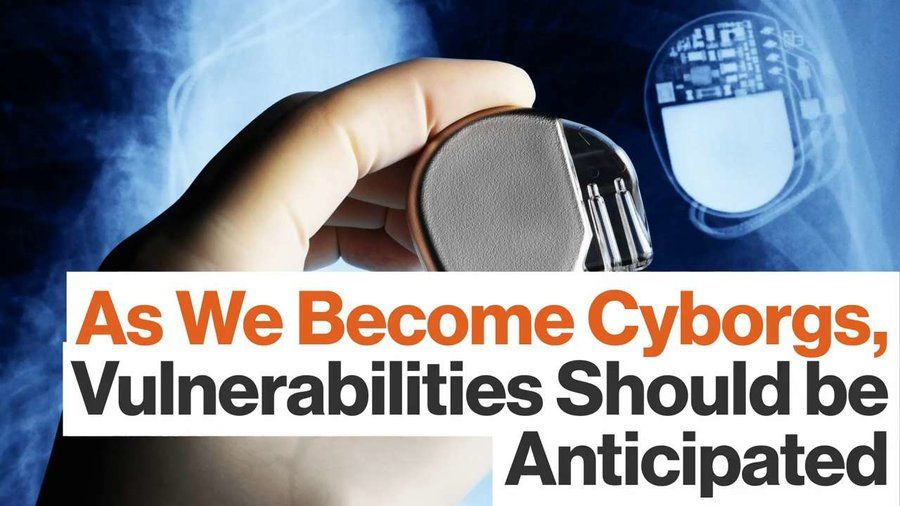Archive for the ‘mobile phones’ category: Page 215
Apr 28, 2016
India to require panic buttons on phones
Posted by Karen Hurst in categories: computing, economics, law enforcement, mobile phones, policy, security
New requirement if you’re a Smartphone device provider and trying to sell in India.
Starting next year, all mobile phones sold across India must include a panic button, local news outlets are reporting. In addition, by 2018, all cell phones need to come with a built-in GPS chip, so a person in trouble can be more easily found.
“Technology is solely meant to make human life better and what better than using it for the security of women,” communications and IT minister Ravi Shankar Prasad said in a statement, according to The Economic Times. “I have taken a decision that from January 1, 2017, no cell phone can be sold without a provision for panic button and from January 1, 2018, mobile sets should have in-built GPS.”
Continue reading “India to require panic buttons on phones” »
Apr 28, 2016
Cyrano lets you smell what’s on your iPhone
Posted by Karen Hurst in categories: health, mobile phones
Smell what you view.
Practically every product I’ve ever reviewed has had to pass some kind of smell test.
But none more so than Cyrano, a new cylindrical shaped three-inch tall consumer electronics gadget that is being marketed as a “digital scent speaker.” I’ve been sniffing around it for a few days. It is now available in limited quantities on preorder.
Continue reading “Cyrano lets you smell what’s on your iPhone” »
Apr 27, 2016
Can AI fix education? We asked Bill Gates
Posted by Aleksandar Vukovic in categories: education, mobile phones, robotics/AI
Bill Gates on personalized learning, AI in education.
The rise of smartphones has transformed the way students communicate and entertain themselves. But the classrooms they spend so much of their time in remain stubbornly resistant to transformation. On one hand, technology has long had a home in classrooms — I learned to type on an Apple IIe in the late 1980s. But for most schools, the approach to teaching remains stubbornly one-size-fits-all: a single teacher delivering the same message to a group of about 30 students, regardless of their individual progress.
Bill Gates is working to change all that. Through the Bill and Melinda Gates Foundation, Microsoft’s co-founder and chairman has invested more than $240 million to date in a developing field known as “personalized learning.” It’s a diffuse set of initiatives, led mostly by private companies, to develop software that creates individual lesson plans for students based on their performance, coaching them through trouble spots until they have mastered the subject at hand. Teachers still play a central role in the classroom, but they do less lecturing and more one-on-one coaching.
Continue reading “Can AI fix education? We asked Bill Gates” »
Apr 27, 2016
Why precision medicine is important for our future
Posted by Karen Hurst in categories: biotech/medical, electronics, genetics, health, mobile phones, neuroscience, wearables
We definitely need precision medicine. If you don’t believe it is worth that; then I have a few widows & widowers who you should speak to; I have parents that you should speak with; I have a list of sisters & brothers that you should speak with; and I have many many friends (including me) that you should speak with about how we miss those we love because things like precision medicine wasn’t available and could have saved their lives.
 Precision medicine is the theme for the 10th annual symposium of the Johns Hopkins Institute for Nano Biotechnology, Friday, April 29, 2016 at 9 a.m. in the Owens Auditorium at the School of Medicine. This year’s event is cohosted by Johns Hopkins Individualized Health Initiative (also known as Hopkins in Health) and features several in Health affiliated speakers.
Precision medicine is the theme for the 10th annual symposium of the Johns Hopkins Institute for Nano Biotechnology, Friday, April 29, 2016 at 9 a.m. in the Owens Auditorium at the School of Medicine. This year’s event is cohosted by Johns Hopkins Individualized Health Initiative (also known as Hopkins in Health) and features several in Health affiliated speakers.
By developing treatments that overcome the limitations of the one-size-fits-all mindset, precision medicine will more effectively prevent and thwart disease. Driven by data provided from sources such as electronic medical records, public health investigations, clinical studies, and from patients themselves through new point-of-care assays, wearable sensors and smartphone apps, precision medicine will become the gold standard of care in the not-so-distant future. Before long, we will be able to treat and also prevent diseases such as diabetes, Alzheimer’s disease, heart disease, and cancer with regimes that are tailor-made for the individual.
Continue reading “Why precision medicine is important for our future” »
Apr 26, 2016
Photosynthesis Phone Charger
Posted by Shailesh Prasad in categories: mobile phones, solar power, sustainability
Apr 26, 2016
Global Wearable Technologies: Devices, Applications, And Services Market 2016 — 2021
Posted by Karen Hurst in categories: 3D printing, augmented reality, computing, drones, mobile phones, quantum physics, robotics/AI, singularity, space travel, virtual reality, wearables
We’re in an exploding evolution state for technology across all industry sectors and consumer markets.
3 to next 5 years — we see IoT, Smartphones, Wearables, AI (bots, drones, smart devices and machines), 3D printing, commercialization of space, CRISPR, Liq Biopsies, and VR & AR tech.
5 to next 8 years — we will see more BMI technology, smart body parts, QC & other Quantum Tech, Humanoid AI tech, bio-computing, early stage space colonization and mining expansion in space, smart medical tech., and an early convergence of human & animals with technology. 1st expansion of EPA in space exploration due to mining and over mining risks as well as space colonization. New laws around Humanoids and other technologies. Smartphones no longer is mass use due to AR and BMI technology and communications.
Apr 23, 2016
CLICK HERE to support Bioo: Charge your Phone with the Power of a Plant
Posted by Klaus Baldauf in category: mobile phones
The world’s first plant pot that charges your phone with electricity from plants’ photosynthesis | Crowdfunding is a democratic way to support the fundraising needs of your community. Make a contribution today!
Apr 18, 2016
Implanted Medical Devices Save Our Lives And Tempt Computer Hackers
Posted by Karen Hurst in categories: biotech/medical, computing, cyborgs, health, internet, mobile phones, neuroscience, security
All true and good points. Until the under pinning technology and net infrastructures are update; all things connected will mean all things hackable.
Medical devices like pacemakers and insulin pumps will save many lives, but they also represent an opportunity to computer hackers who would use the Internet to cause havoc. Former futurist-in-residence at the FBI, Marc Goodman says it is easy to take for granted how connected we’ve already become to the Internet. Most American adults keep their phones within arm’s reach all day, and keep their devices on their nightstand while they sleep — and forget about actually remembering people’s phone numbers. That is a job we have outsourced to machines.
In this sense, says Goodman, we are already cyborgs. But digital devices connected to the Internet will continue to move inside our bodies, just as pacemakers and insulin pumps have. In his interview, Goodman discusses cases of computer hackers taking advantage of these devices’ connectivity to show how vulnerable we could soon become to their potentially destructive wishes. In one case, a hacker demonstrated he could release several weeks of insulin into a diabetic’s body, certain to cause a diabetic coma and death. In another, hackers induced epileptic seizures by hacking the Epilepsy Foundation’s webpage.
Continue reading “Implanted Medical Devices Save Our Lives And Tempt Computer Hackers” »
Apr 16, 2016
Micro spaceships powered by lasers to search for alien life
Posted by Karen Hurst in categories: alien life, computing, internet, mobile phones, robotics/AI, space travel
Microscopic spaceships powered by Earth-based lasers are being developed to hunt for extra-terrestrial life in Alpha Centauri, the closest star system to ours.
The £70m Breakthrough Starshot concept involves creating a tiny robotic spacecraft, no larger than a mobile phone chip, which would carry cameras, thrusters, a power supply and navigation and communication equipment.
Physicist Stephen Hawking, Facebook founder Mark Zuckerberg and Russian internet billionaire Yuri Milner have all joined the project’s board giving it major backing.
















